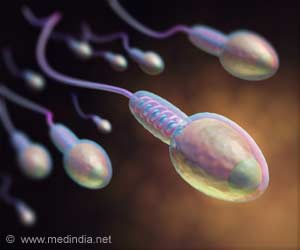New York City’s Department of Health and Mental Hygiene is planning a campaign to encourage men at high risk of AIDS to get circumcised.
New York City’s Department of Health and Mental Hygiene is planning a campaign to encourage men at high risk of AIDS to get circumcised in light of the World Health Organization’s endorsement of the procedure as an effective way to prevent the disease.
In the United States, “New York City remains the epicenter of the AIDS epidemic,” Dr. Thomas R. Frieden, the city’s health commissioner, said in an interview. Referring to H.I.V., he said, “In some subpopulations, you have 10 to 20 percent prevalence rates, just as they do in parts of Africa.”His department has started asking some community groups and gay rights organizations to discuss circumcision with their members, and has asked the Health and Hospitals Corporation, which runs city hospitals and clinics, to perform the procedure at no charge for men without health insurance.
Dr.Freiden felt that even 1,000 circumcisions in the right subgroups might slow the spread of AIDS.
How does circumcision check HIV infection? It is hypothesized that the foreskin’s inner mucosal surface is more susceptible to HIV as it has more immune cells vulnerable to HIV infection than the external surface. Furthermore, the foreskin acts as a physical barrier, trapping HIV next to the mucosal surface of the penis for a longer period of time. In this moist environment, the virus can also survive longer, potentially increasing the risk of infection. Small tears in the foreskin as a result of intercourse could also promote entry of the virus. After circumcision the penile shaft and glans develops more epithelial keratinization, a process which makes the penis less susceptible to viral invasion.
The WHO endorsement had come in the wake of studies done in Uganda, Kenya and South Africa. In the trials circumcision was shown to lower a man’s risk of contracting the virus from heterosexual sex by about 60 percent.
But there are those who contend that African studies cannot be extrapolated elsewhere as in those very poor countries have always seen extremely high rates of transmission. There are no effective safe-sex efforts and very low use of condoms.
Advertisement
Nonetheless, Health Commissioner Frieden said, it is logical to assume that circumcision would offer protection in some types of gay sex.
The risk from receptive anal sex is five times higher, he said, and circumcision would obviously not protect those men. Oral sex is much less risky.
Also, cutting down infections among bisexual men — some of whom do not admit to female partners that they participate in gay sex — would protect women, he felt.
Dr. Frieden also said he thought health insurance companies might agree to pay for preventive circumcisions since they already covered them for infections and urinary blockage. City hospitals also offer the operation in those cases.
Whatever the case, activists urge any widespread campaign to promote circumcision should not undercut other HIV and AIDS prevention messages. The focus should continue to be on the promotion and use of condoms and having fewer sexual partners.
Some others apprehend that the campaign in US could sound racist in that Blacks would be targeted.
Still one has to start somewhere, circumcision supporters note.
Source-Medindia
GPL/M






